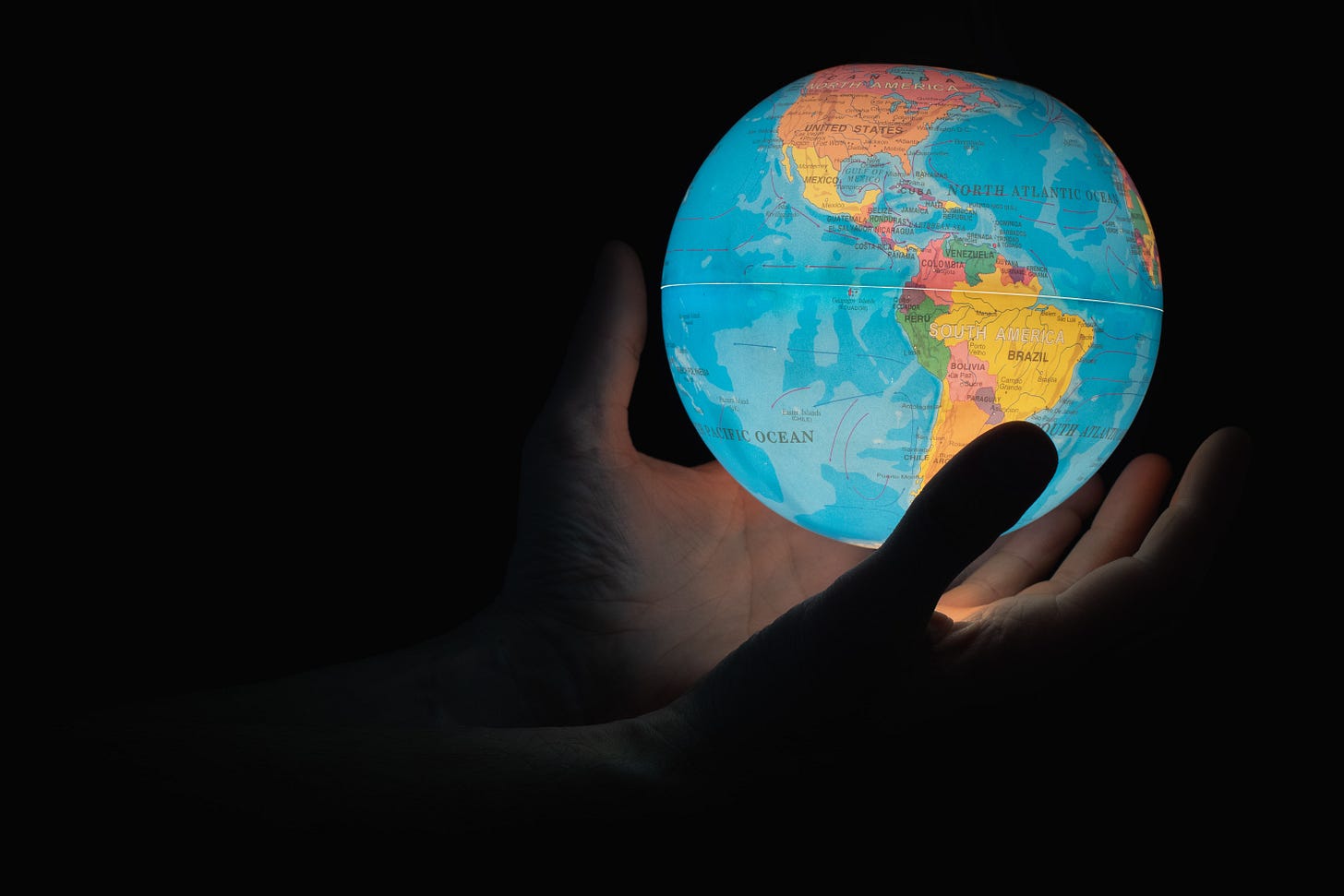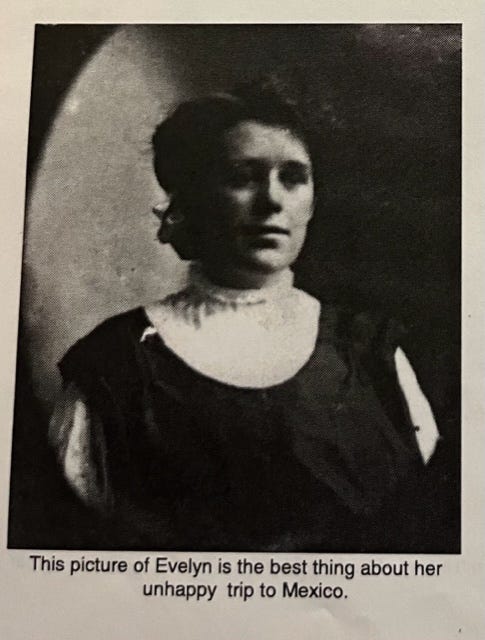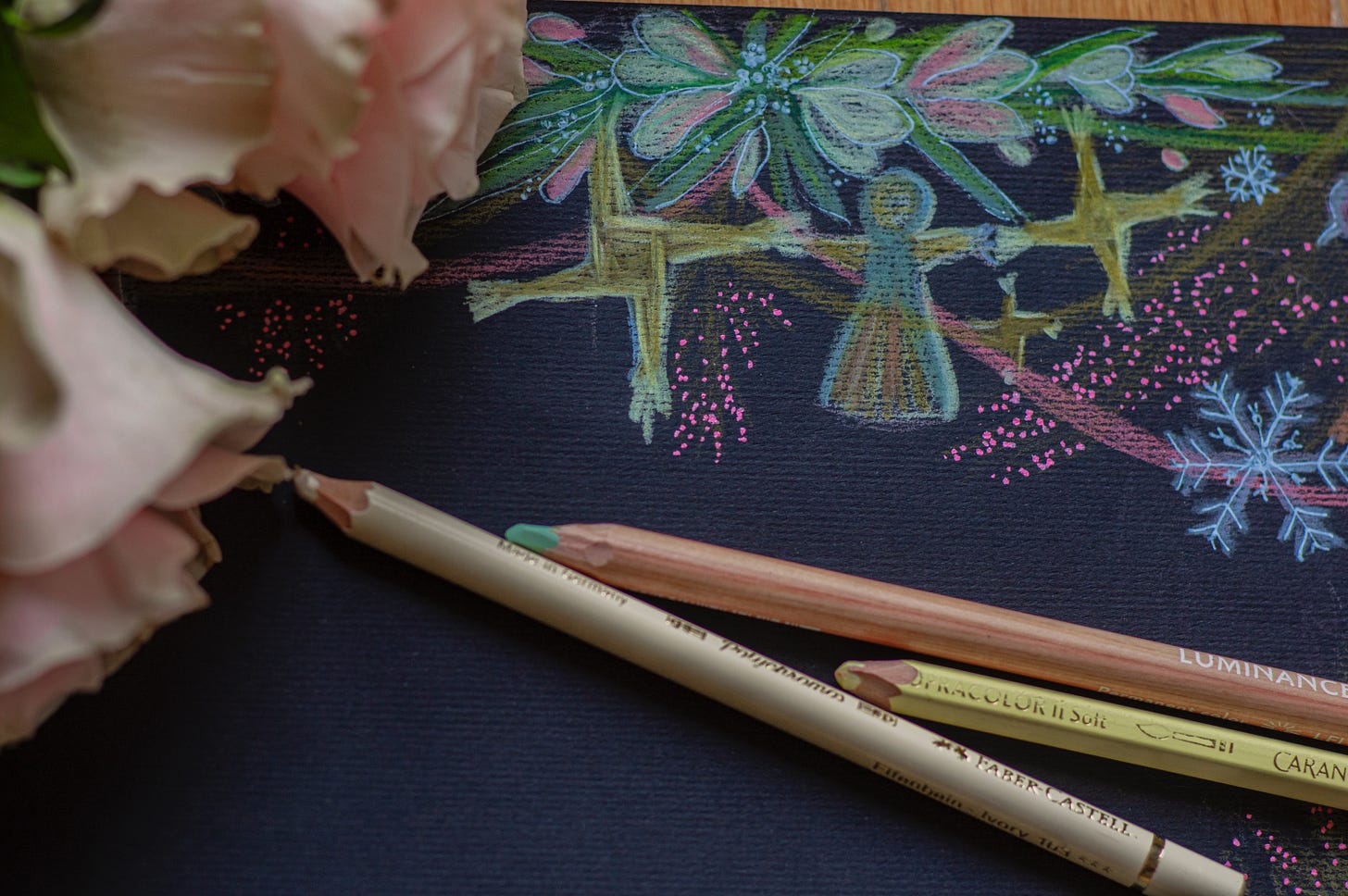Telling my son stories in order to live
On death, dinosaurs, and how life always finds a way
“We tell ourselves stories in order to live...We interpret what we see, select the most workable of the multiple choices. We live entirely, especially if we are writers, by the imposition of a narrative line upon disparate images, by the ‘ideas’ with which we have learned to freeze the shifting phantasmagoria which is our actual experience.” – Joan Didion
“If there is one thing the history of evolution has taught us, it's that life will not be contained. Life breaks free, it expands to new territories and crashes through barriers. Painfully, maybe even dangerously, but… Life finds a way.” — Jeff Goldblum, Jurassic Park
Every night, I tell my three-year-old son a story that we invent together. Sometimes it’s a silly story meant to make him laugh, with monster trucks or chipmunks named after his friends. Sometimes it’s inspired by something he struggled with at school. Sometimes it’s a medicine story, as writer Clarissa Pinkola Estés might call it, a real one from my life or a retelling of a story I’ve loved, offered up from my roots in response to his struggle, to remind him he’s not alone. Sometimes it’s a story to remind myself that I’m not alone.
Lately my son has been wanting to hear one story more than others. We call it “The Story of the Earth.” It started when we were shining a flashlight onto his ceiling, one that shows pictures of all the planets with the click of a button. “Tell me about this planet,” he said, pointing to Earth. And so I did.

The Story of the Earth
In the beginning, it was dark. There are many names for the dark. I think of it as The Great Mystery. All was black, and then – boom! Out came the suns, and the planets, and the moons, and the asteroids. All went flying, in all directions.
Eventually, our Earth found her place near the sun. She gathered close to it with the other planets, like a family sitting around a campfire. Mercury, Venus, Mars, Jupiter, Saturn, Uranus, Neptune.
At first, all that you could see on her surface was water, black and shimmering, as in the Great Mystery. But she had fire in her, too. It rose up above the water and cooled into land. The continents emerged. And soon, from the place where fire and water and earth met, life emerged too.
First it was just one little germ. And then a bigger germ. And then a water bug, a jellyfish, a shark.
The animals in the water became curious about the land. They grew legs so that they could explore. Giant plants grew on the land, and the animals ate them. The animals grew tall and became the dinosaurs.
The earth was so proud. She had created such beauty. She loved her creations.
But then – boom! An asteroid that had been careering through space since the first boom created another one.
Why? We will never know. That is the way of the Great Mystery.
What we do know is that instead of new things coming out, her creations disappeared into the black space created by the boom, and more blackness rose up, shrouding her from the sun.
(Did the asteroid say sorry? My son always wants to know.)
Perhaps it was very sorry. Perhaps it cried alongside her. Perhaps it didn’t even notice her as it went flying off in a new direction.
In any case, the Earth was forever changed. Her teeming waters and tropical forests were covered in sheets of ice. She spun silently, alone and cold, for quite some time.
But then, another quiet boom emerged, from the deepest, darkest part of her – the place where fire met water and became land. Life was asking to return.
What should she do? She had every reason not to try again. But she thought of how much she had loved her first creations. And she decided to hope.
Once again, she welcomed and nurtured new little things, which became big things. The big things became curious, and they grew legs to walk upon the land again. But the land was still very cold, so they needed not only to grow legs but coats to keep them warm. Some grew feathers and became birds. Some grew fur and became the little chipmunks and other small creatures we love, and later, the monkeys. And the monkeys ate the leaves from the new trees and grew tall, though not as tall as the dinosaurs before.
The monkeys came down from the trees and began to explore the land. They became curious about the water, and how it could teach them about change. They became curious about the land, and how it could be shaped and worked to create a home for them. They became curious about fire, and how it could both take and give life. They made a practice of gathering around it, as their mother had once done, when she found her place near the sun. Here, they made many different creations, just like their Mother. They made dance. They made art. They made song. They made tools. They made cakes!
Somewhere along the way, in their thinking and making, these curious monkeys became what we think of as human.
The humans asked themselves what they should do with all of these creations. They thought about their Mother and all she had done for them. They decided that the best way to celebrate her was to throw her a party. A thank you party for their mother, who had been through so much, and who still loved them, after all these years. With dancing, and art, and songs. And cake!
(A cake with sprinkles, my son always adds. Yes, with sprinkles, I always say. And then he’ll say, The End.)
The stories mothers tell in order to live
After a few nights of making and remaking this story, I realized that I was telling it to remind myself that I’m not alone. I was telling the story of how I have healed, after losing my son’s sister-to-be in late pregnancy, a year ago this week. About how I came back to life again, for my family.
I also realized that in a way, I have been telling the story of my own mother, who lost a son to stillbirth before me, and about how I am here because she and my father did their best to come back to life. Of my grandmother Marion, who was born after two stillbirths, ten years apart from her older sister. Of her mother, Evelyn, a shy and anxious woman who had every reason not to try again, and who still did. Of my grandmother’s grandmother, Rozilla, who supported her family through her work as a poet and teacher after losing her father to an untimely death. Of Rozilla’s mother, Harriet, who married that man, as did Harriet’s two sisters, when they were orphaned in their teens.
I am also telling the story of the Indigenous and Black people who were displaced and disenfranchised by the devastation my ancestors brought to their lands, which I wrote about last week. The continued resilience and survival of their descendants is also the story of the earth. A story big enough for all of us to live inside.
A truly priceless caption from my family’s genealogy album, featuring my great-grandmother Evelyn.
Ancestral stories of life after death
This story carries me back and back and back, connecting me to my own tribal roots in the British Isles. We know Feb. 2 as Groundhog’s Day, but it was once so much more to my Celtic ancestors. At this time of year, on the “cross-quarter” day that marks the halfway point between the Winter Solstice and the Spring Solstice, they celebrated the feast of Imbolc, dedicated to the Goddess Brigid. She represented the spark of inspiration and hope at a dark time. The time at which the animals would begin again to make milk for the babies to come in the spring, sustaining the lives of the hungry people who were likely living on their last stores of food held over from the fall’s harvest. A time when the ice still covers the land, but the Earth is beginning to dream of creating life again.
The story of rebirth after loss has universal resonance all over the world, of course. Pachamama, Brigid’s South American sister, has been celebrated at this time with Martes de Challa since before the rise of the Incans. The Yoruba of West Africa celebrate Oshun, the river goddess who gives and takes life. Christians tell the story of Jesus rising again in the spring. Buddhist nun Pema Chödrön teaches of “the love that will not die.” Even the science and history of the earth is poetic in its own way — a story of how we were formed from stardust, gigantic collisions, and other nearly-impossible possibilities. I think it is all woven from the same dark cloth of the Great Mystery.
So, do we really want to march through the “winter doldrums” with no celebrations or sacred stories like this in sight, besides the frumpy historical hand-me-down of Groundhog’s Day? Our mother deserves better than that, no? This is such a dynamic time of year for her. A chance to consider the eras of ice that we’ve all survived, and that our earth has survived, and to mark the return of the spark of life. That is, if we’re ready to welcome it. Maybe even with sprinkles.
What powerful medicine to give to our children.
Imbolc-inspired art by Elena Mozhvilo via Unsplash
NOTES:
Robin Wall Kimmerer was just interviewed in the New York Times this week for the 10th anniversary of Braiding Sweetgrass, which I wrote about last week. The perspective she offers from Maple Nation, as she calls it, echoes these themes of rebirth and resilience. “The story that we have to illuminate is that we don’t have to be complicit with destruction,” she tells the Times’ David Marchese. “ The refusal to be complicit can be a kind of resistance to dominant paradigms, but it’s also an opportunity to be creative and joyful and say, I can’t topple Monsanto, but I can plant an organic garden… that’s healing not only for land but for our culture as well – it feels good. It’s also good to feel your own agency.” Indeed.
If you’ve experienced loss this year and want to move through it by planting a garden (or baking an Imbolc cake with sprinkles), see my workshop info below. Alternatively, you could simply light a candle and move your body in ways that reflect the rebirth and regrowth that this time represents. Please feel free to peruse my playlists from winter and spring of last year, respectively, created for this purpose. (Read: I put most of the depressing songs first, then loaded up the middles with fist-pumping survival jamz.)
I’m also a fan of Yoga with Adriene (any other YWA heads out there?) and this short, free “root to rise” practice was a nice way to kick off my Imbolc.
Want to write your own story of renewal? Try this relevant prompt from
in , then warm yourself around the campfire of their lovely comments section.If you’re into seasonal celebrations and stories that don’t involve Christian traditions, check out
, who publishes a great newsletter -- -- and podcast. I’ve learned a lot from her about Imbolc and other British Isles lore, as well as many fun tarot tips. (While Brigid is most closely tied to the Star Card, AYG’s episode with tarot skeptic Ann Friedman about the Eight of Cups is also a worthy listen.)For kids, Harvest Days by Kate DePalma offers more beautiful illustrations of the many “thank you parties” humans host for the Earth around the world.
If you’re experiencing loss and looking for more medicine stories to tell with children, we also love The Rabbit Listened. It talks about a child whose beautiful tower gets knocked down — and with the help of an empathetic friend, begins to dream again of creating something new.
This week I also grieve for the family of Tyre Nichols, and for all families who lose their children to senseless violence. There is no story that can truly make sense of this. This week I am remembering and honoring Tyre Nichols’ love for art, for skateboarding, and for his four-year-old son and family. If you can, please donate to his family’s GoFundMe (graphic image warning), so that they can have the resources they need to heal.
What stories or resources have helped you or someone you love “come back to life” after loss? I’d love to hear from you in the comments below!
WORKSHOPS:
On Thurs. February 16, I’m teaching a workshop on restoring connection to self and community through food after loss. It was a little bit inspired by Imbolc, and the idea that we need self-love and community-love in February, not just the romantical kind.
On Thurs. March 23, I’ll be teaching about how to heal and acknowledge grief through gardening and nature.
Both are offered through the organization RTZ Hope. The link to register is here (scroll down to the very bottom). I invite you to pass this link or email along to anyone who may benefit from these offerings!






This story of the earth is absolutely charming, I could see it as a children's book.
I LOVED this! You are so talented-- and your son is so fortunate to grow up with these stories!